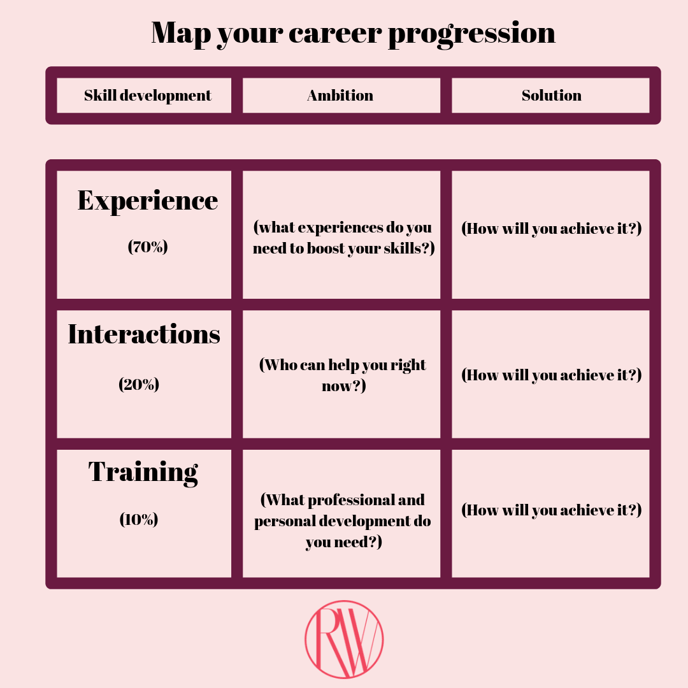The difference between dreams and reality lays in the plans and systems that we set up to effectively take steps forward in our life. When most people approach their career, it seems like they fall into a “work hard, play hard” mentality that only gets them so far. However, if we want to grow, we actually have to think hard about where we want to be in our career in the next year, 5 years, 10 years and beyond. Because, it’s the process of understanding our long term goals that helps us see the person that we are striving to become.
Having a career map helps us keep our eyes focused on the summit while diligently scaling the mountain that is your career goals.
“It doesn’t matter if you go up the mountain quickly or slowly – there’s still a mountain…you need to learn patience; that some things that really matter like: love, fulfilment, self-confidence, a skill set – all of these things take time. And, if you don’t ask for help to attain these things, you will fall off the mountain” – Simon Sinek
We have to do some work to overcome the challenges of a digital world. We are constantly pursuing instant gratification and we’ve forgotten the joys, impact and fulfilment that working hard on something brings over a long period of time. And, if you haven’t guessed already, your ultimate career progression will require huge amounts of time and energy.
Your career map should be based on what skills you want to develop
Researches have found that real skill develop happens when we gain experience, social interaction and get formal training. Here’s a simple scaffold to help you identify what skills you need to develop and how you can plan to develop them.

Think of what skills you’ll need to build and improve to reach those career heights – then, put them down on paper. This stops you from aiming in the dark and reveals some clear steps that you can take right now. The majority of your skills will come from real experiences. So, think of the things that you can do at work that will increase your career capital for the future.
Key takeaway questions:
-
What responsibilities can I take on that will improve my skill set?
-
Who's an expert that I can talk to?
-
Where can I get more relevant education?
Don't forget about your 'soft skills'
Some of the most needed skills today are 'soft skills'. These are the skills that are not tangible, but help us form a robust foundation to build upon.
They include:
-
Creativity
-
Persuasion
-
Collaboration
-
Adaptability
-
Time management
Soft skills are important, because they are multifaceted. We can take soft skills with us to new roles and they'll serve us just as well.
Assess where you are right now
Ok, be honest – you had bigger hopes and dreams for your career and you’re not overly content with where you currently are. When you feel disenchanted with your career, it's a sign that you need to become clear on what your day to day tasks are and tie them to the benefits it creates for your company.
For example: you’re part of the admin team. You deal with incoming requests and you segment inquires to the relevant departments. You make sure that all the ‘i’s are dotted and all the ‘t’s are crossed. You have a level of authority over the quality control of your organisation because you enable effective communication between other departments and the customers.
The benefits: your contribution means that the business can run smoothly because all the parties involved are effectively informed and educated on what’s going on. You create an additional layer of professionalism while interacting with clients and customers so that the integrity of your company’s brand is maintained and kept strong.
When you understand the benefits you're creating for your company, you understand your real value to the organisation. This will help give you a greater perspective, one that's beyond your day-to-day tasks. It also opens up the possibilities of where you can grow and develop, because you'll be able to see the real meaning behind the different roles within an organisation. You'll see where your role overlaps and matches up with others. Now, you can find the most efficient way to increase your career capital and move up the ranks.
Remember: having a career map is about plotting the most efficient way to your ultimate goal. And, that means working smarter by being intentional with what you're doing.
Where do you want to go
Typically, people just want to progress in their career because it means more money, but considering that you’ll be at your job for more than 8 hours per day, 5 days a week for 260 days of the year (that’s around 10,500 hours per year) – you might want to think about job satisfaction and whether your work will be meaningful in the long run.
If you feel like you don’t know exactly know where you want to end up, then start with the meaning that you want to get from your job, research what roles supply that meaning, then reverse engineer to figure out what duties you’ll be required to perform. And lastly, work out what skills and experience you’ll need in order to do those duties at a high level.
When we map our our career progression, we feel more confident and more in control of our destinies. We also have a practical vision that shows us exactly what we need to do in order to develop our skills and reach the heights that we dream about.
Let’s make it a point not to be passive about our career progression, because the investments that we make in ourselves today will be tomorrow’s payoff.


